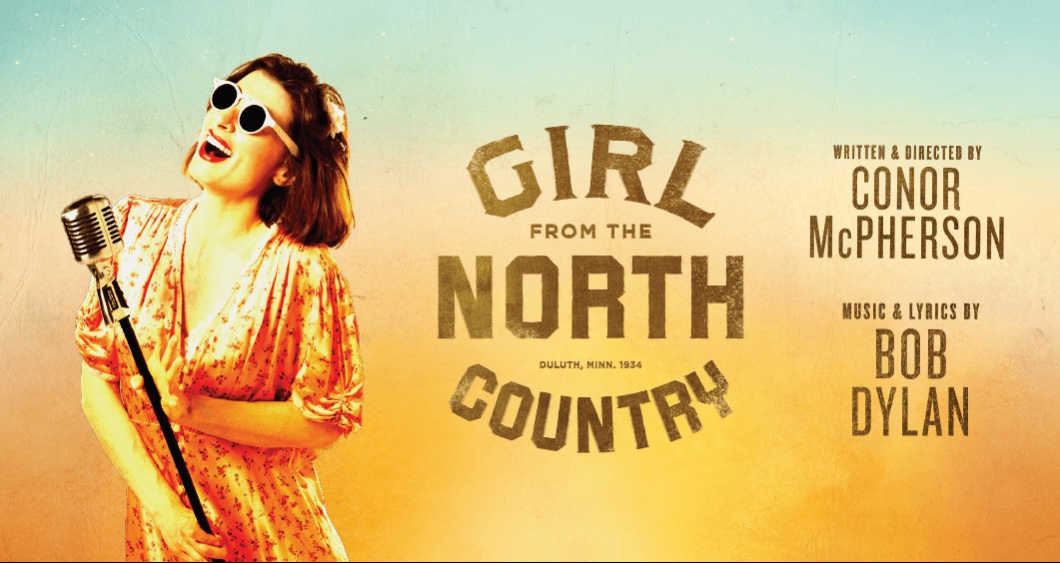Review: Girl from the North Country by touring company
by Brian Paul Scipione
Bob Dylan’s people approached Irish playwright Conor McPherson with the concept of crafting a musical based on songs by our folksy Nobel Prize winner. Girl from the North Country is the second time this concept has been brought to the Broadway stage. The first was Twyla Tharp's The Times They Are a-Changin' in 2006. By all critical and financial accounts Tharp’s attempt was a definitive miss. It was assailed for being full of spectacle but of little substance and only scant authenticity to the songs’ original intentions. The curtain came down for good after a mere twenty-eight performances.
In Tharp's defense, her 2002 Movin’ Out, a musical adaption of the works of Billy Joel, had been a financial and critical smash. Its Broadway run lasted over three years.
_adj.jpg)
Girl from the North Country also had a brief Broadway run, but for different reasons. It debuted mere weeks before the COVID-19 pandemic shut down all the theaters. Since then, it has been revived for a couple of limited runs and began its North American touring production in the fall of 2023.
The story revolves around a boarding house in Dylan’s boyhood hometown of Duluth, Minnesota in 1934 during the Great Depression. The guesthouse’s proprietor Nick Laine could be seen as the protagonist, though his story doesn’t have much of a character arc. Neither do those of the mélange of other characters. The work's structure is not too far off from Sherwood Anderson’s Winesburg, Ohio but it somehow manages to be even more bleak. These are certainly the types of characters that populate Dylan’s many story songs, but it would take a dour confluence of existential proportions to bring together so many hard-luck cases at the same time. Remember, Dylan is the same musician who wrote many comic gems including “Leopard Skin Pillbox Hat,” “Talkin' World War III Blues,” “Rainy day Women #12 and 35,” “Maggie’s Farm,” “Talking Bear Mountain Picnic Massacre Blues,” and "Bob Dylan's 115th Dream."
The musicians and their instruments are scattered across the stage and include piano, fiddle, banjo, and a small drum kit. All of the musical renditions are as moody and slow as a Quaalude cabaret. The characters sulk between the songs in an angry, silent depression, a plight like what Thoreau characterized as “quiet desperation.” The aesthetics are very reminiscent of the works of the painter Ron Flu: drab earth tones seething with life in their very stillness.
_adj.jpg)
Blame Conor McPherson, creator and director, for the tone of the play. His other dramatic works are rife with similar downtrodden characters wallowing in dire straits. In similar fashion, these characters' senses and primary motivations derive directly from the Freudian psychological playbook.
The cast duly plays along. They take their positions in tableaux staged at glacial tempo and are given no opportunity to add personal interpretations of their characters. This imposed immobility emphasizes McPherson’s interpretation that they are nothing more than cogs in the aging, addled factory that was U.S. society during the Depression. Their performances resemble dew drops on a spiderweb, unconnected but randomly tied together in a dreamcatcher that captures only bad dreams.
This atmosphere and interpretation may may sound unpleasant but, surprisingly, it isn’t. It has the same appeal as a Lars Von Trier movie, full of cringe that's impossible to turn away from.
Twenty-eight Dylan songs are used. Nearly all of are relegated to the minor key and performed at a slow, meandering, and muddy pace. “I Want You,” normally a happy tune, is rendered as a drunken calliope melody. “Like a Rolling Stone,” normally toe-tapping and infectiously catchy, is presented bluesy and abridged, sung by a silhouetted soloist. The epic “Idiot Wind” is sliced into pieces, causing it to lose both its glory and context. The only numbers to escape this treatment are the raucous “Hurricane” (featured in all of the video promos, which is no surprise) and the joyous “You Ain’t Goin’ Nowhere.”
_adj.jpg)
While watching the performance I wondered if the songs were transformed and diced up because of copyright issues. No; it turns out that this work is fully sanctioned, so these were deliberate choices.
Perhaps this was an attempt to distance thhe production from the jukebox failure of Tharp's The Times They Are a-Changin'. And perhaps McPherson thought Dylan’s songs could use some workshopping.
Another interesting choice is the limited number of "Easter eggs." A play drawn from the works of such a prolific songwriter could have been furnished with many small surprises and reminders. And that glaring absence reveals the thrust of the production.
It’s not about Dylan, it’s not by Dylan, it’s not how Dylan played his songs or what he wrote about. In fact, you could conclude it doesn’t have much to do with Dylan. Or Robert Zimmerman, for that matter. Girl from the North Country is imagined in a universe in which Dylan never went electric, never crashed his motorcycle, never became born again, never became a Wilbury, never even took a stand on civil rights. The characters in this play are the like a Buddhist notion of hungry ghosts who broke free from their original songs and wander eternally, unable to reconcile their past sins because they can’t remember what they were.
Girl from the North Country
by Conor McPherson
touring company
April 23 - April 28, 2024
April 23 - 28, 2024
Bass Concert Hall, Austin
